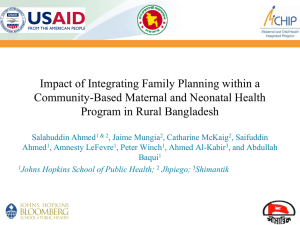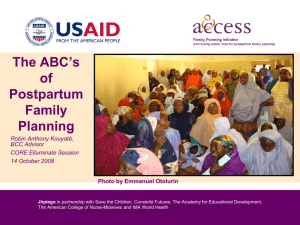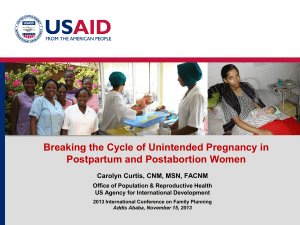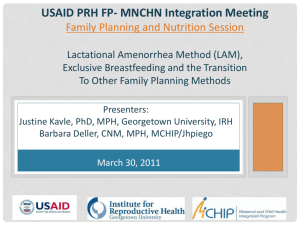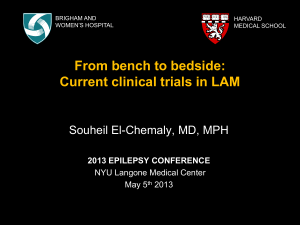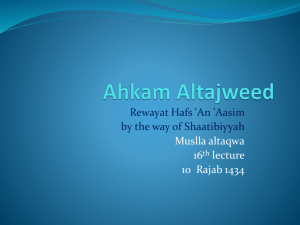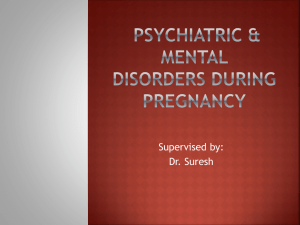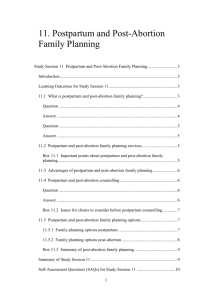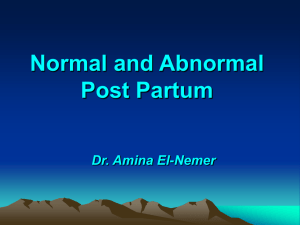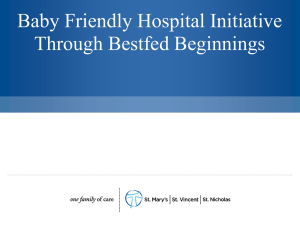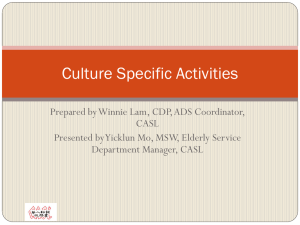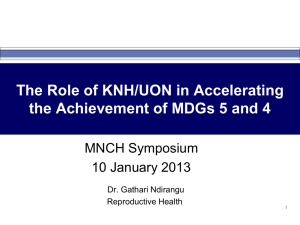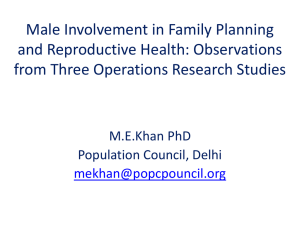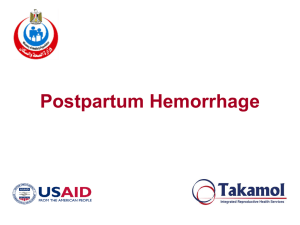Impact of Promotion of Lactational Amenorrhea Method
advertisement
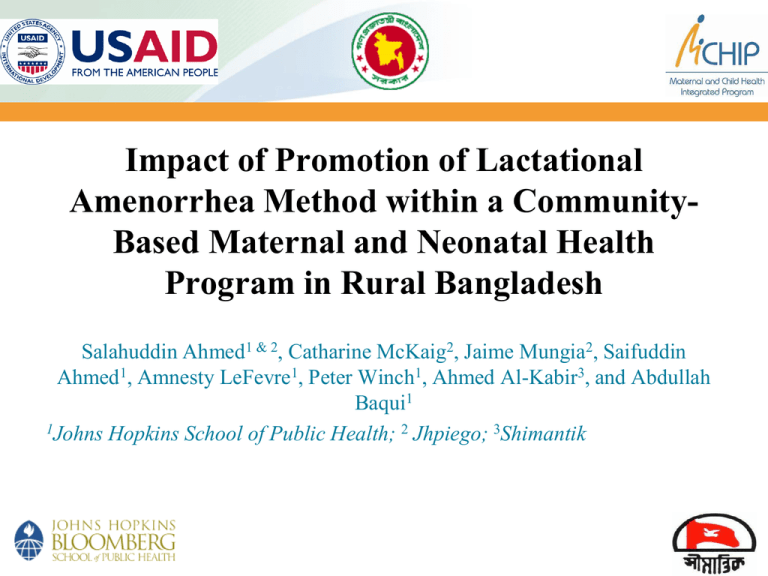
Impact of Promotion of Lactational Amenorrhea Method within a CommunityBased Maternal and Neonatal Health Program in Rural Bangladesh Salahuddin Ahmed1 & 2, Catharine McKaig2, Jaime Mungia2, Saifuddin Ahmed1, Amnesty LeFevre1, Peter Winch1, Ahmed Al-Kabir3, and Abdullah Baqui1 1Johns Hopkins School of Public Health; 2 Jhpiego; 3Shimantik 1 Study Context Indicators Sylhet Median duration for any breastfeeding 28 months Median duration for exclusive breastfeeding 2.3 months Unmet FP need 26% CPR (any method) 31% TFR 3.7 Birth intervals <24 months 26% <36 months 57% Source: BDHS 2007 Study Objectives 1. To develop and test an integrated Postpartum Family Planning, Maternal and Neonatal Health (PPFP/MNH) service delivery approach 2. To assess the impact of the intervention package on contraceptive knowledge and practices including LAM during the extended postpartum period 3 Study Design Study sites: eight unions in two sub-districts in Sylhet district, Bangladesh Non-Random Allocation Comparison unions: four Enrolled women: 2257 Intervention unions: four Enrolled women: 2247 Enrollment of women during <8 months of pregnancy Comparison clusters: MNH ONLY during ANC and Postpartum visit Intervention clusters: MNH plus FP during ANC and Postpartum visit Follow the cohort through pregnancy to 36 months postpartum 4 Intervention Delivery Strategy 1. Capacity strengthening: Training Orientation 2. Community-based advocacy and behaviour change communication approach: Household level through Community Health Workers (CHW) Community level through Community Mobilizers Facility level through Service Providers 5 CHW Counselling Topics and Timing FP integrated with MNH program Messages During pregnancy ANC √ Newborn Care, EBF √ Return to fertility Day 6 postpartum Day 29-35 postpartum Additional Month 2-3 & 4-5 PP √ √ √ √ √ LAM and transition, EBF √ √ √ √ HTSP √ √ √ √ √ √ √ √ FP methods Visit to facility √ √6 Results 7 Starts in a Low Performance Area Ever Used Contraceptive Method Intervention 18.0 Control 21.1 0 10 20 30 40 50 Percent 60 70 80 90 100 Contraceptive Use Rate at 3, 6, 12, and 18 Months Postpartum by Study Arm 50% 47% 45% 40% 42% 36% 37% 34% 35% 30% 27% 25% 18% 20% 15% 11% 10% 5% 0% 3 months 6 months 12 months 18 months 3 months 6 months 12 months 18 months Intervention Comparison 9 Contraceptive Use Rate at 3, 6, 12, and 18 Months Postpartum by Study Arm 50% 45% 47% 42% 40% 37% 36% 34% • Statistically significant improvement in the contraceptive use rate in the intervention area over 35% time 30% 27% -- 36% at 3 months to 47% at 18 months postpartum 25% -- 10% to 31% increase the comparison arm over the same period of 3-18 months 18% 20% postpartum 15% 11% early adoption • High number of new users and a trend towards increased 10% 5% 0% 3 months 6 months 12 months 18 months 3 months 6 months 12 months 18 months Intervention Comparison 10 Contraceptive method mix among intervention area users’ 11 Contraceptive method mix among intervention area users’ • Overall high adoption of LAM 23% at 3 months and 12% at 6 months • Shift in method preference from LAM to pills, condoms, and injectables 12 Contraceptive method mix among intervention area users’ • Slight increases in injectables and long-acting methods • Rise in sterilization from 1.9% to 3.1% in intervention area • Oral contraceptives are the preferred contraceptive at 12 and 18 months 13 Contraceptive Method Mix Among Control Area Users’ 14 Ever LAM User by Study Arm 15 0.00 0.25 0.50 0.75 1.00 Duration of LAM use 1 2 3 Postpartum months 4 5 6 Duration of exclusive breastfeeding by study arm 0.00 0.25 0.50 0.75 1.00 Duration of exclusive breastfeeding by study arm 1 3 analysis time Intervention 17 6 Control Exclusive breastfeeding by LAM use status and study arm 1 3 No LAM, Intervention 6 analysis time No LAM, Control 12 LAM, Intervention *P <0.001 Lessons Learned and Future Programming Implications Promotion of LAM had a positive effect on optimal breastfeeding practices: duration of exclusive breastfeeding 25% higher at 6 months LAM is a feasible and acceptable method of contraception for the first 6 months postpartum and LAM has an important role in contraceptive mix at 3 and 6 months postpartum Significant increase in the probability of contraceptive adoption through 18 months postpartum period in the intervention arm It is feasible to integrate PPFP into existing contacts with mothers but includes the addition of 2 visits and 5 messages Responsibility of programs to take advantage of opportunities 19 for integration Study Partners Funded by USAID Shimantik and CDPA Government of Bangladesh JHSPH ACCESS-FP /MCHIP 20 THANK YOU 21
